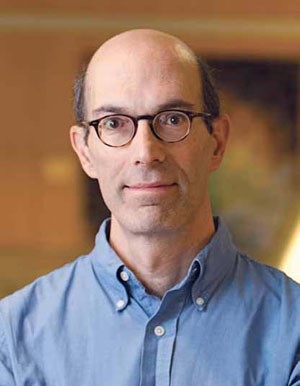Stanley
Fields
PhD

(206) 616-4522
Howard Hughes Medical Institute
S-313 Foege Building
Department of Genome Sciences
University of Washington, Box 35560
Seattle, WA 98195-5065
Education & Training
Ph.D., Cambridge University, U.K., 1981
Honors
Member, American Academy of Arts and Sciences (2015)
Lee Hartwell Lecture, Yeast Genetics and Molecular Biology Meeting (2012)
UW Postdoc Association Mentor of the Year (2011)
Paul Janssen Prize in Advanced Biotechnology and Medicine (2009)
Vollum Award for Distinguished Accomplishment in Science and Technology (2007)
Jacob Heskel Gabbay Award in Biotechnology and Medicine (2003)
Member, National Academy of Sciences (2000)
Chiron Biotechnology Research Award (2000)
Fellow, American Academy of Microbiology (1998)
Fellow, American Association for the Advancement of Science (1997)
Research Interests
The major focus of our laboratory has been the development and implementation of new technologies. Our motivation is that a novel technology can catalyze research across a spectrum of biological investigations, often leading to multiple applications beyond those initially envisioned. Technology development has led us to experimental questions that we had previously not explored, stimulated collaborations with computational biologists, biochemists and structural biologists, and provided opportunities to contribute to findings in medicine, as through studies of cancer-associated proteins, polyglutamine aggregation, aging, Toll-like receptors and malaria. Technology development is a challenging and oftentimes risky area of biology, but it is integral to scientific progress.
Much of our research has centered on methods of protein analysis, although we have also put substantial effort into methodologies to analyze DNA and RNA and to further synthetic biology approaches in yeast. We have also recently initiated projects that seek to engineer bacteriophages for multiple purposes. We are able to pursue questions in multiple directions, initiating new projects as creative ideas emerge or findings from other labs impact our own work. Our philosophy on technology development is to pursue projects that can address important questions in basic biology or medicine, that can be readily applied by other labs, and that take advantage when possible of our expertise with the yeast Saccharomyces cerevisiae. Some members of our group have concentrated on wholly new technologies, some have adapted existing ones, and others have focused on addressing biological questions by applying the lab’s expertise in technology. Our group is typically 10 to 12 members, unified by an interest in methodology, the use of common reagent sets and genomic or proteomic platforms, and a sharing of computational tools.
Publications:
Duan, Z, Andronescu, M., Schutz, K., Mcllwain, S., Kim, Y.J., Lee, C., Shendure, J., Fields, S., Blau, C.A. and Noble, W.S. (2010) A three-dimensional model of the yeast genome. Nature 465: 363-367.
Fowler, D.M., Araya, C.L., Fleishman, S.J., Kellogg, E.H., Stephany, J.J., Baker, D. and Fields, S. (2010) High resolution mapping of protein sequence–function relationships. Nature Methods 7: 741-746.
Araya, C.L., Fowler, D.M., Chen, W., Muniez, I., Kelly, J.W. and Fields, S. (2012) A fundamental protein property, thermodynamic stability, revealed solely from large-scale protein fitness data. Proc. Natl. Acad. Sci. U.S.A. 109: 16858-16863.
Kim, I., Miller, C.R., Young, D.L. and Fields, S. (2013) High-throughput analysis of in vivo protein stability. Molec. Cell. Proteomics 12: 3370-3378.
Fowler, D.M. and Fields, S. (2014) Deep mutational scanning: A new style of protein science. Nature Methods 11: 801-807.
Starita, L.M., Young, D.L., Islam, M., Kitzman, J.O., Gullingsrud, J., Hause, R.J., Fowler, D.M., Parvin, J.D., Shendure J. and Fields, S. (2015) Massively parallel functional analysis of BRCA1 RING domain variants. Genetics 200:413-422.
Feng, J., Jester, B.W., Tinberg, C.E., Mandell, D.J., Antunes, M.S., Chari, R., Morey, K.J., Rios, X., Medford, J.I., Church, G., Fields, S. and Baker, D. (2015) A general strategy to construct small molecule biosensors in eukaryotes. eLife 4:e10606.
Taylor, N.D., Garruss, A.S., Moretti, R., Chan, S., Arbing, M., Cascio, D., Rogers, J., Isaacs, F.J., Kosuri, S., Baker, D., Fields, S., Church, G.M. and Raman, S. (2016) Engineering an allosteric transcription factor to respond to new ligands. Nature Methods 13: 177-183
Rich, M.S., Payen, C., Rubin, A.F., Ong, G.T., Sanchez, M.R., Yachie, M., Dunham, M.J. and Fields, S. (2016) Comprehensive analysis of the SUL1 promoter of Saccharomyces cerevisiae. Genetics 203: 191-202.
Gamble, C.E., Brule, C.E., Dean, K.M., Fields, S. and Grayhack, E.J. (2016) Adjacent codons act in concert to modulate translation efficiency in yeast. Cell 166: 679-690.



